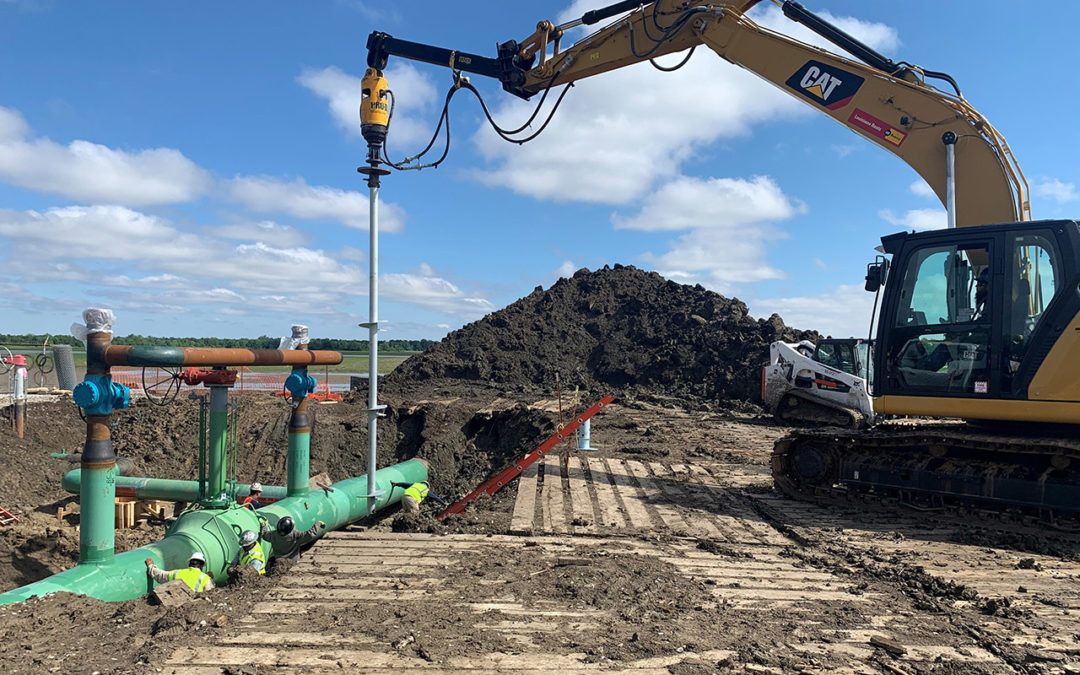
5 Tips for a Safe Helical Pile Installation
Helical piles offer incredibly safe and strong foundational solutions. When compared to traditional concrete foundations, they offer more structural support, instant load-bearing capacity, and extended life expectancy — but that’s only if they’re installed correctly.
The helical pile installation process is a fairly quick and simple one, but it still requires expert service and close attention to detail. If anything is installed incorrectly, it could compromise the viability and, most importantly, the safety of the project
Here are some things we do at Elite Helical to ensure a safe and secure helical pile installation.
5 Tips for a Safe Helical Pile Installation
Ensuring a safe helical pile installation project starts long before the installation actually takes place. In fact, for us, much of how we set our team up for success is done before we even get to the project site.
Here are our top five helical pile installation safety tips, straight from our experts.
1. Calculate the Correct Helical Pile Load Capacity
It’s important to know exactly how much weight helical piles can support. Knowing this information prior to installation helps ensure that the piles are installed in the correct amount, lengths, and depths. Otherwise, they won’t be able to bear the necessary load and support the structure.
There are three primary ways to determine helical pile load capacity:
- Torque correlation
- Bearing capacity in soil
- Direct capacity measurement
At Elite Helical, we always use at least two out of these three methods to calculate helical pile capacity. This way, we can get a more accurate gauge and ensure a stronger, more durable, and safer foundation.
2. Schedule Full-Team Trainings on OSHA Regulations
The Occupational Safety and Health Administration (OSHA) has established many health and safety regulations that are applicable to helical pile installation. The most prominent is OSHA 1926.6603, which dictates various standards to comply with while using pile driving equipment. It’s under the umbrella of OSHA 1926, the Safety and Health Regulations for Construction.
However, there are many other applicable OSHA standards that aren’t specific to helical pile installation. Think things like:
- Noise control
- Personal protective equipment
- First aid and medical attention
- Environmental controls (gases, fumes dusts, etc.)
- Sanitation
- And more
In order to ensure that our workers are safe while completing helical pile installations, we hold regular staff training sessions on OSHA regulations. Whether we’re reviewing and refreshing on material we’ve already learned or going over a new standard, we’re always up to date on these standards — and we know the importance of adhering to them at all times while out on a job.
3. Prepare for High-Risk Projects & Environments Ahead of Time
If you fail to plan, you are planning to fail. That’s why our team thoroughly investigates all aspects of a project before we get to the site and start working. This is especially important for projects and environments we’ve deemed “high-risk” for one reason or another.
For example, helical piling is a great foundational choice for structures in remote or limited-access locations. This could be onshore or offshore. Either way, we inform ourselves of the area we’re headed before we go there, so we understand the conditions we’re working with and can plan for what to do in the case of an emergency.
4. Conduct Daily Pre-Task Safety Assessments
Every morning, our team completes a pre-task safety analysis form. This needs to be completed before we can begin any work on a project.
The pre-task safety analysis form runs our team through a series of questions to ensure that we’re safe and equipped for work, the conditions around us are safe to work in, and that we’re in compliance with OSHA and other applicable industry standards. It’s a great daily check-in that helps us be proactive and notice any potential safety hazards before they occur.
5. Re-Evaluate Tasks & Processes Regularly
Once we complete a task or job, we’ll evaluate how it went. We’ll ask ourselves questions like:
- What went well? What didn’t?
- Were there any hiccups in the installation process? Why?
- Were there any times we didn’t feel safe?
- Were there any processes that could have been improved for efficiency?
- Were there any processes that felt too rushed?
And so on. Overall, these evaluations are completed in order to continuously improve human and environmental safety during the helical pile installation process. And it’s part of what’s got us to being one of the safest, most efficient companies in our industry.
For Safe & Effective Helical Pile Installation, Choose Elite Helical.
At Elite Helical, we make safety a top priority — for our people and for our environment. We’ll work with you to ensure helical piles are installed quickly and in a responsible manner that protects everyone involved.
For more information on our helical pile installation process and what it’s like working with us, contact our team online.